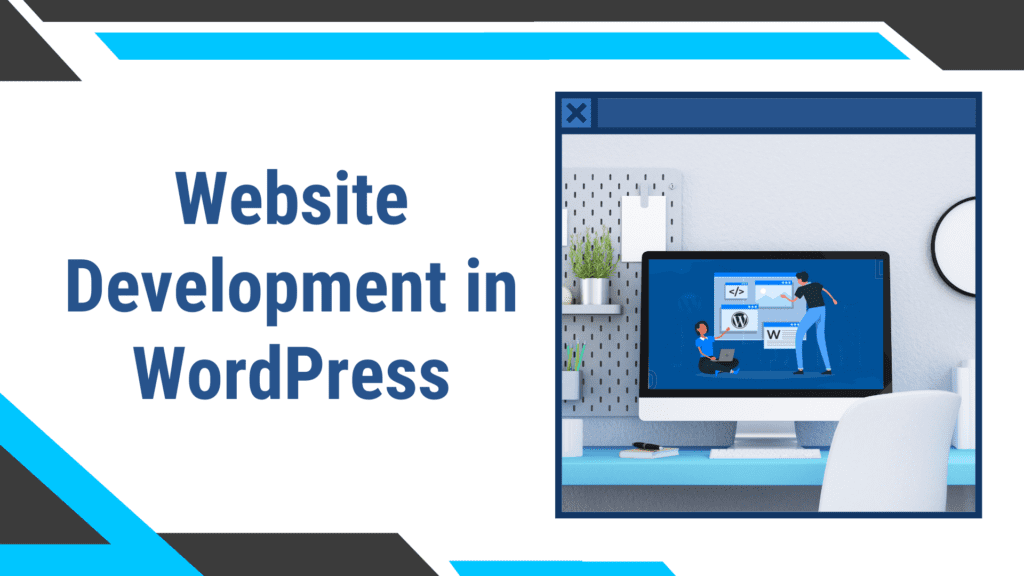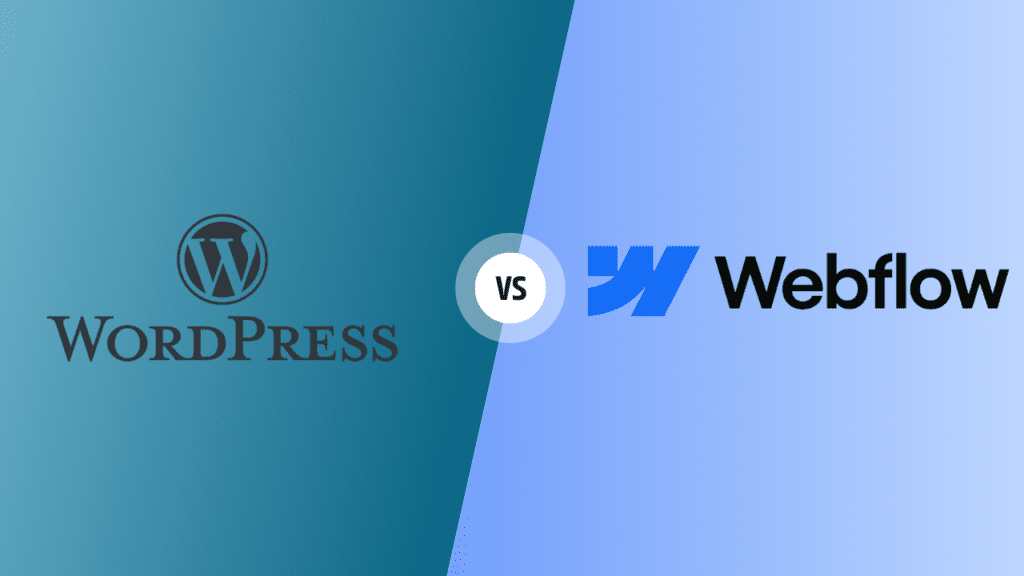If you want your customers to find you easily and have your business professionally presented, and if you ever asked yourself is building a site in WordPress a smart decision, creating a website in WordPress is one way to achieve this. However, it’s important to know that newer and more modern platforms have emerged over time, and one of the more popular ones is Webflow.
The impression your website leaves on clients can be crucial when deciding whether to purchase your products or services. Did you know that 75% of consumers judge a company’s value based on its website design? Additionally, over 30% of potential customers can be permanently lost simply because you don’t have an online presence.
If you choose a website platform (WordPress, Webflow) and later realize it isn’t the right fit, switching is neither quick nor simple. That’s why it’s important to choose wisely and carefully consider whether a WordPress site is the best option for your business.
Who Is a WordPress Website Ideal For?
The biggest advantage of WordPress is its simplicity. Creating a WordPress site usually involves customizing ready-made templates—themes. However, the main drawback of this approach is that websites tend to look similar to one another.
To overcome this, page builders like Elementor Pro offer the ability to create websites from scratch using a blank theme. This results in unique websites tailored to the specific needs of clients. This is also the best choice when it comes to creating a website in WordPress.
A WordPress website is an excellent choice for company and individual presentation sites (portfolios, blogs) as well as online stores (e-commerce). It can be further enhanced and upgraded over time to match the growth of your business. The drag-and-drop system allows you to quickly and easily add content, whether it’s photos, text, or videos.
It’s a misconception that WordPress sites are only meant for small businesses and bloggers. Companies like UNICEF, Sony Music, Walt Disney, Rolling Stone magazine, Vogue, and Bata are prime examples that WordPress can deliver a high-quality website.
Benefits of Creating a Website in WordPress

1. Ease of Use
If you have basic computer skills, you can edit your website yourself after brief training. In just a few minutes, you can update existing content, and add new pages, blog posts, images, videos, etc.
2. Upgradeability
You can redesign and upgrade your WordPress website at any time. This process is much easier if the site is built from scratch. Numerous plugins can improve the site’s functionality
3. SEO-Friendly
SEO plugins like Yoast SEO or RankMath guide you on optimizing your site perfectly for search engines. WordPress websites can also be integrated with tools like Google Analytics, Facebook Pixel, and others
4. Mobile Optimization
WordPress websites can be easily optimized for mobile phones and tablets. This optimization improves sales by enhancing the user experience and boosting search engine rankings.
5. Affordable Costs
The cost of creating a WordPress site depends on its complexity—whether it’s a single sales page, an online shop, or something else. The price also varies depending on whether you choose a ready-made (free or premium) theme or a custom-built site, which is undoubtedly the better option.
It’s worth noting that the WordPress platform is free to download and use. However, you’ll need to budget for domain and hosting services. Since a website is a long-term and profitable investment, we don’t recommend compromising on quality for cost savings.
Drawbacks of a WordPress Website
1. Security Risks
WordPress sites are often targeted by hackers, especially those using ready-made themes. Regular updates and data backups are essential to prevent this.
2. Increased Costs and Slower Speed Due to Plugins
Advanced functionalities require installing plugins, many of which are paid. Having too many plugins can slow down the website, negatively affecting user experience and search rankings.
- Limitations for Specific Functionalities
Creating a WordPress website can be restrictive for those requiring unique functionalities or designs without knowledge of PHP, HTML, CSS, or JavaScript. In such cases, professional developers can build the site according to your needs.
3. Frequent Updates
Once your WordPress site is completed, it requires regular plugin updates and monthly maintenance to ensure seamless functionality.
The Biggest Challenges of WordPress and How to Overcome Them
WordPress websites face two limitations that lead some users to prefer alternative platforms. Due to the use of common themes, websites often look similar and lack authenticity—although this doesn’t have to be the case.
The biggest challenge with WordPress, however, is that its website designs may not align with modern standards, making them appear outdated. Fortunately, both limitations can be addressed by using Webflow or creating a custom WordPress site.
Custom WordPress development involves building a website from scratch using a blank theme. This approach ensures a professional website with a unique design that is fully tailored to the user’s needs. These websites are created to meet specific client requirements while utilizing WordPress as the base platform.
The main advantage of this approach is that users can design the layout and functionalities exactly as they envision. This results in a visually appealing, unique, professional, and cohesive website.
Webflow VS WordPress

Compared to WordPress, Webflow enables the creation of more modern and visually appealing websites with better performance, fully tailored to users. Webflow’s interface is more complex and requires technical knowledge, but designing a site is easier since there are no plugins or themes, and no additional configurations are needed.
With Webflow, you won’t need to update outdated plugins as the platform always operates on its latest version. It also offers built-in SEO suggestions, permissions tools, testing, and publishing. The platform automatically adjusts to different screen sizes.
Over 3.5 million users have opted for Webflow, while 501.28 million websites have been created in WordPress. WordPress offers free community support, whereas Webflow provides professional customer support during business days. While Webflow has a free plan, the platform isn’t entirely free—hosting costs are included in the pricing, unlike WordPress.
How to Know Which Platform You Need?
WordPress and Webflow are vastly different platforms, and the choice depends on the user’s needs. WordPress remains an excellent option for simpler business or blog sites but is also suitable for other types of websites.
Webflow is the ideal choice if visual design is crucial. It’s often preferred by artists, such as painters. While both platforms are easy to use, Webflow’s interface may be overwhelming for beginners unfamiliar with web design.
Building a Website in WordPress or Webflow
If you want a professional website, the experienced team at Ralink Digital is here to help. We specialize in building websites on both platforms. For WordPress, we prefer creating custom sites from scratch using blank themes to ensure each site is unique and fully tailored to the client. We achieve this using Elementor Pro, which also allows for easy content updates later.
If you need a new website or want to redesign your existing one, feel free to contact us or schedule a free consultation. We’re confident we’ll find the optimal solution for your business growth.



